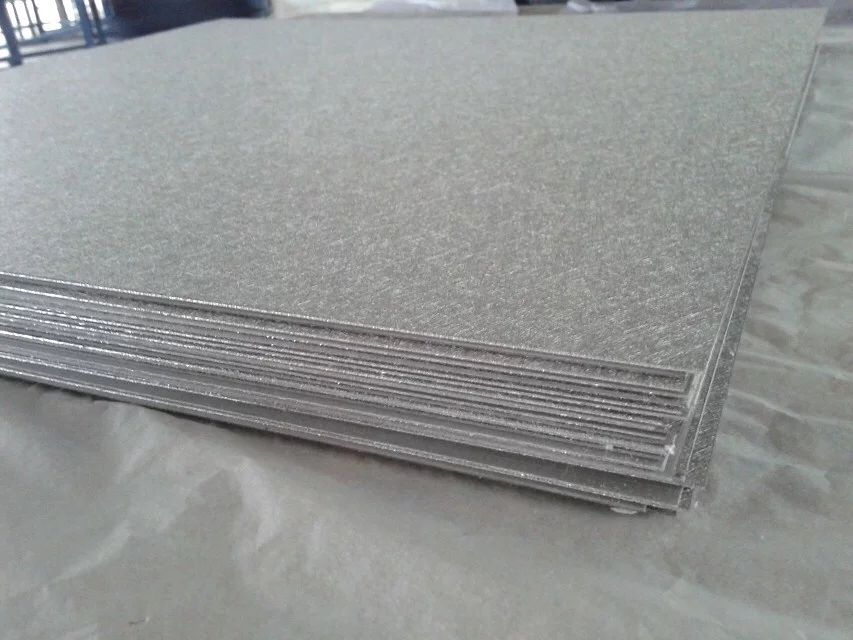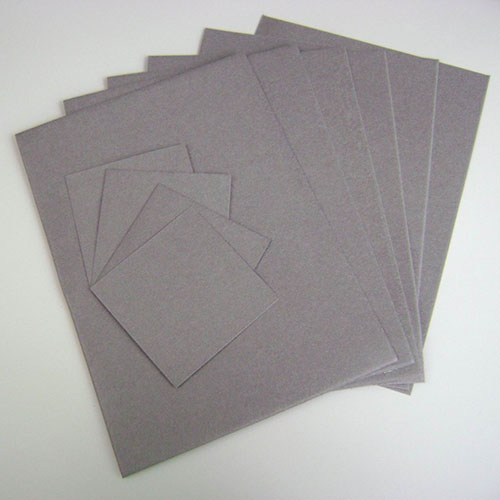At present, the technical problem of LED lighting fixtures is the heat dissipation problem. The LED heat supply and electrolytic capacitors have become the short-term development of LED lighting fixtures, and the cause of premature aging of LED light sources.
In the luminaire scheme using the LV LED light source, since the LED light source operates at a low voltage (VF=3.2V) and a large current (IF=300~700 mA), the heat is very strong, and the space of the conventional luminaire is small, and the area is small. The heat sink is difficult to derive heat quickly. Despite the use of a variety of cooling solutions, the results are not satisfactory, and become a problem with LED lighting. Looking for easy to use, good thermal conductivity, and low-cost heat sink materials are always working hard.
At present, after the LED light source is powered up, about 30% of the electrical energy is converted into light energy, and the rest is converted into heat energy. Therefore, it is a key technology to design the LED luminaire structure as soon as possible to derive so much thermal energy. Thermal energy needs to be dissipated through heat conduction, heat convection and heat radiation. Only by exposing the heat as soon as possible can the cavity temperature in the LED lamp be effectively reduced, in order to protect the power supply from working in a long-lasting high temperature environment, in order to avoid premature aging of the LED light source due to long-term high temperature operation.
Cooling route for LED lighting
Because the LED light source itself does not have infrared rays or ultraviolet rays, the LED light source itself has no radiation heat dissipation function, and the heat dissipation path of the LED lighting fixture can only derive heat through a heat sink closely combined with the LED lamp bead. The heat sink must have the functions of heat conduction, heat convection, and heat radiation.
Any heat sink, in addition to being able to quickly transfer heat from the heat source to the surface of the heat sink, mainly relies on convection and radiation to dissipate heat into the air. Thermal conduction only solves the heat transfer path, and thermal convection is the main function of the heat sink. The heat dissipation performance is mainly determined by the heat dissipation area, shape, and natural convection strength. Thermal radiation is only an auxiliary function.
In general, if the distance of heat from the heat source to the surface of the heat sink is less than 5 mm, then as long as the thermal conductivity of the material is greater than 5, the heat can be derived, and the rest of the heat must be dominated by heat convection.
Most LED lighting sources still use low voltage (VF=3.2V), high current (IF=200~700mA) LED lamp beads. Due to the high heat during operation, aluminum alloy with high thermal conductivity must be used. There are usually die-cast aluminum radiators, extruded aluminum radiators, and stamped aluminum radiators. Die-cast aluminum radiator is a kind of technology for pressure casting parts. The liquid zinc-copper-aluminum alloy is poured into the inlet of the die-casting machine, and die-casting is carried out by a die-casting machine to cast a shape heat sink defined by a pre-designed mold.
Die-cast aluminum radiator
The production cost is controllable, the heat dissipation fins cannot be made thin, and it is difficult to make the heat dissipation area large. LED lamp radiators commonly used die-cast materials for ADC10 and ADC12.
Extruded aluminum radiator
The liquid aluminum is extruded through a fixed mold, and then the rod is machined and cut into a heat sink of a desired shape, and the processing cost is high. The extruded aluminum heat sink is shown in Figure 3. The heat dissipating fins can be made a lot of thin, and the heat dissipating area is expanded. When the cooling fins work, the air convection heat is automatically formed, and the heat dissipating effect is better. Common materials are AL6061 and AL6063.
Stamped aluminum radiator
It is stamped and pulled up by steel plate and aluminum alloy by punching machine and die, making it a cup-type radiator. The inner and outer periphery of the stamped heat sink is smooth, and the heat-dissipation area is limited due to the wingless. Commonly used aluminum alloy materials are 5052, 6061, 6063. The quality of stamping parts is small and the material utilization rate is high, which is a low-cost solution.
The heat conduction of the aluminum alloy heat sink is ideal, and is suitable for the isolated switching constant current power supply. For non-isolated switch constant current power supply, it is necessary to isolate AC and DC, high voltage and low voltage power supply through the structural design of the luminaire, in order to pass CE or UL certification.
Plastic aluminum radiator
It is a heat sink with a heat-conductive plastic outer casing aluminum core. The heat-conducting plastic and the aluminum heat-dissipating core are formed on the injection molding machine at one time, and the aluminum heat-dissipating core is embedded, and it is required to be machined in advance. The heat of the LED lamp bead is quickly transmitted to the heat-conducting plastic through the aluminum heat-dissipating core. The heat-conductive plastic uses its multi-wing to form air convection heat, and uses its surface to radiate part of the heat.
Plastic aluminum radiators generally use the original color of thermal conductive plastic white and black, and the plastic radiation aluminum radiator of black plastic has better radiation dissipation effect. Thermally conductive plastic is a thermoplastic material. The fluidity, density, toughness and strength of the material are easy to be injection molded. It has good resistance to cold and heat shock cycles and excellent insulation performance. Thermally conductive plastics have better emissivity than ordinary metallic materials.
The thermal conductive plastic density is 40% smaller than that of die-cast aluminum and ceramics. The weight of the same shape of the heat sink can reduce the weight of the plastic-coated aluminum by nearly one-third; compared with the all-aluminum heat sink, the processing cost is low, the processing cycle is short, and the processing temperature is low; The finished product is not easy to break; the customer-supplied injection molding machine can carry out the differential shape design and production of the lamps. The plastic-coated aluminum heat sink has good insulation performance and is easy to pass the safety regulations.
High thermal conductivity plastic radiator
The high thermal conductivity plastic radiator develops rapidly. The high thermal conductivity plastic radiator is a full plastic radiator. Its thermal conductivity is several times higher than that of ordinary plastic, up to 2-9w/mk, and has excellent heat conduction and heat radiation capability. It can be applied to various insulation and heat dissipation materials of various power lamps, and can be widely applied to various types of LED lamps of 1W to 200W.
High thermal conductivity plastic withstand voltage up to 6000V AC, suitable for non-isolated switching constant current power supply, HVLED high voltage linear constant current power supply. This type of LED lighting fixture is easy to pass the strict safety inspection of CE, TUV, UL and so on. The HVLED uses a high voltage (VF=35-280 VDC) and a small current (IF=20-60 mA) to operate, and the heat of the HVLED lamp bead is reduced. The high thermal conductivity plastic radiator can be used in traditional injection molding and extrusion machines.
Once formed, the finished product has a high finish. Greatly improve the efficiency of the production, the flexibility of the design is high, and the designer's design concept can be fully utilized. The high thermal conductivity plastic radiator is made of PLA (corn starch) polymerized, fully degradable, no residue, no chemical pollution. There is no heavy metal pollution in the production process, no sewage, no waste gas, and meet the global environmental protection requirements.
The high thermal conductive plastic heat sink has dense nano-scale metal ions between the PLA molecules, which can move rapidly at high temperature and increase the heat radiation energy. Its vitality is superior to that of metal materials. High thermal conductivity plastic heat sink with high temperature resistance, no breakage at 150 °C for five hours, no deformation, with high voltage linear constant current IC drive scheme application, no need for electrolytic capacitors and large volume inductance, greatly improve LED lamp life, non-isolated power solution, high efficiency ,low cost. Especially suitable for the application of fluorescent tubes and high-power industrial and mining lamps.
The high thermal conductivity plastic radiator can be designed with many precise cooling fins. The heat dissipating fins can be made very thin and the heat dissipating area can be expanded. When the cooling fins work, the air convection heat is automatically formed, and the heat dissipating effect is better. The heat of the LED lamp beads passes through the high thermal conductivity plastic directly to the heat sink, which dissipates heat quickly through air convection and surface radiation.
High thermal conductivity plastic heat sinks are lighter than aluminum. The density of aluminum is 2700kg/m3, and the density of plastic is 1420kg/m3, which is almost half of that of aluminum. Therefore, the heat sink of the same shape has a weight of only 1/2 of that of aluminum. Moreover, the processing is simple, and the molding cycle can be shortened by 20-50%, which reduces the power of cost.
Metal fiber sintered felt filter medium
Describe:
Metal fiber sintered felt (diameter to micron) is made of non-woven, superimposed and sintered at high temperature.
Characteristics
In stainless steel sintered felt, the pore gradient is formed by different pore size layers, which can control the filtration accuracy and the amount of dirt absorption of stainless steel sintered felt. It has the characteristics of three-dimensional mesh, porous structure, high porosity, large surface area, uniform distribution of pore size and so on. As a result of the above structure and characteristics, stainless steel sintered felt can effectively compensate for the weakness of metal NetEase plugging and vulnerability, and can make up for the fragility of powder filtration products and the shortage of small flow rate. It has the heat resistance of ordinary filter paper and filter cloth that can not be compared with each other. The stainless steel metal sintered felt is an ideal Filter Material with high temperature resistance, corrosion resistance and high precision
1. The pressure rises slowly, the replacement period is long
2. High porosity and good permeability, small pressure loss, large flow rate
3. Corrosion resistance, high temperature: acid, alkali, organic solvents, pharmaceuticals and other corrosion, can be used in the environment of 480 ℃ for a long time
4. Easy to process, molding, welding
5. According to the requirements of users, special production of enhanced, thickened, protective network and other specifications.
Applications:
Stainless steel sintered felt has excellent filtration performance and is an ideal high-temperature, corrosion-resistant and high-precision filter material. Widely used in polymer filtration, petrochemical, electronic high temperature gas dedusting, refining process filtration, viscose filtration, ultrafilter prefiltration, vacuum pump protection filter, filter membrane support, catalyst carrier, automotive airbag, Aircraft, ships and other fuel filtering, hydraulic system filtering.



Metal Filter Materials
Air Filter Material,Metal Filter Materials,Filter Material Medium,Sintered Wire Mesh
Henan Sinofiltec Technology Co.,Ltd , https://www.sinofiltec.com


